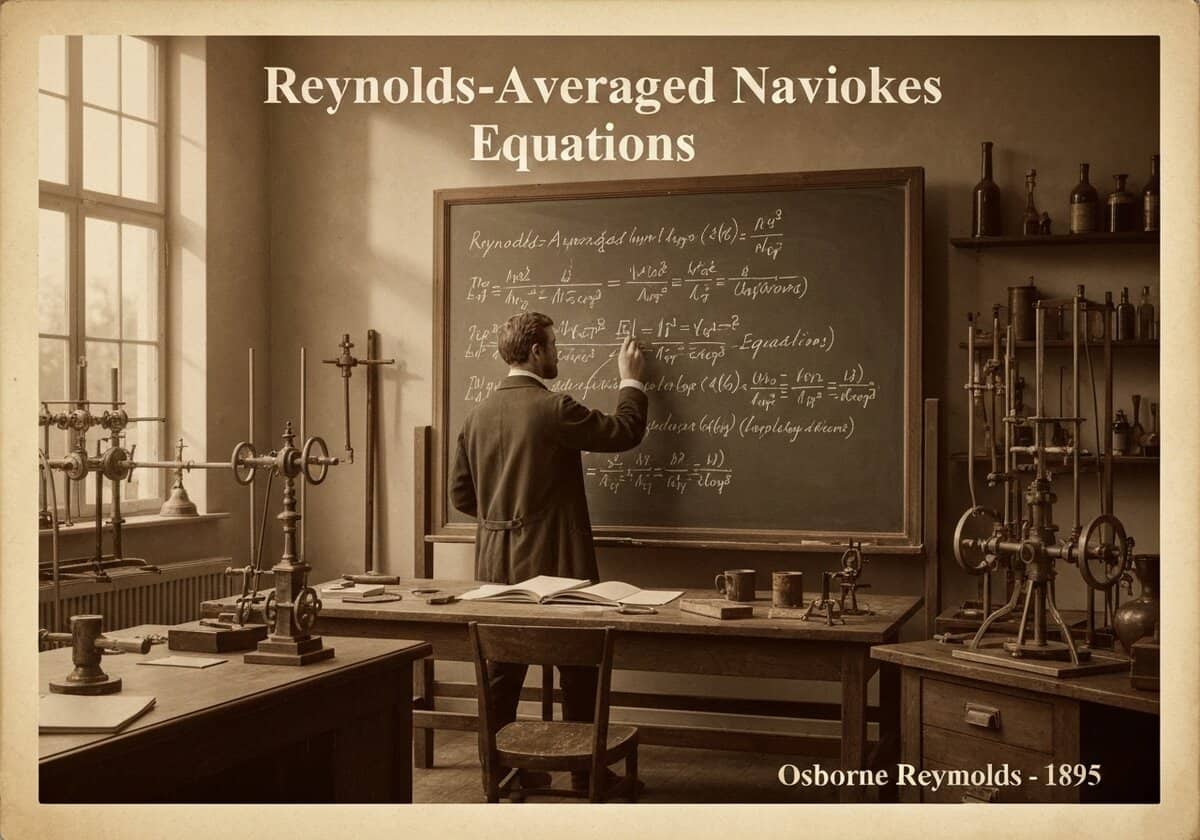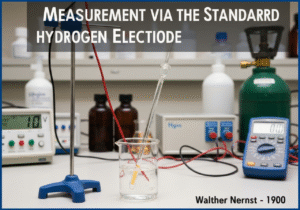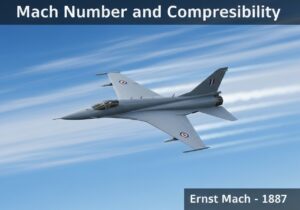The Reynolds-Averaged Navier-Stokes (RANS) equations are time-averaged equations of motion for turbulent fluid flow. This approach, called Reynolds decomposition, separates flow variables into a mean and a fluctuating component. The averaging process introduces an additional term, the Reynolds Stress tensor, which represents the effect of turbulence and must be modeled to achieve closure, making simulations computationally tractable.
Reynolds-gemittelte Navier-Stokes-Gleichungen (RANS)
- Osborne Reynolds

The core idea behind RANS is Reynolds decomposition, where an instantaneous quantity is split into its time-averaged and fluctuating parts. For velocity, this is [latex]u_i(x,t) = \bar{u}_i(x) + u’_i(x,t)[/latex]. When this is substituted into the Navier-Stokes equations and the equations are time-averaged, the non-linear convective term generates a new term, [latex] -\rho \overline{u’_i u’_j} [/latex], known as the Reynolds stress tensor. This tensor represents the net transfer of momentum due to turbulent fluctuations.
The appearance of this unknown tensor leads to the ‘closure problem’ of turbulence: there are more unknowns than equations. To solve the system, the Reynolds stresses must be related to the mean flow quantities through a turbulence model. The most common approach is the Boussinesq hypothesis, which assumes the Reynolds stresses are proportional to the mean strain rate, introducing an ‘eddy viscosity’ or ‘turbulent viscosity’. This is analogous to how molecular Viskosität relates stress to strain rate in laminar flow. Turbulence models, such as the popular k-ε (k-epsilon) and k-ω (k-omega) models, are sets of additional transport equations used to compute this eddy viscosity throughout the flow field. For example, the k-ε model solves for the turbulent kinetic energy (k) and its rate of dissipation (ε). RANS provides a good balance of accuracy and computational cost for many engineering applications, as it avoids the prohibitive expense of resolving all turbulent eddies directly.
Typ
Unterbrechung
Verwendung
Vorläufersubstanzen
- Navier-Stokes-Gleichungen
- Osborne Reynolds’ experiments on flow transition from laminar to turbulent
- Statistische Mechanik und Konzepte der Zeitmittelung
- Joseph Boussinesq’s eddy viscosity hypothesis
Anwendungen
- Entwurf von Tragflächen und Rümpfen kommerzieller Flugzeuge
- Analyse von Turbomaschinen wie Düsen und Turbinen
- hydrodynamische Auslegung von Schiffsrümpfen
- Modellierung der Strömung in Verbrennungsmotoren
- Anwendungen im Tiefbau wie Windbelastungen auf Gebäuden
- Sportwissenschaft zur Analyse der Aerodynamik von Sportlern und Geräten
Patente:
Mögliche Innovationsideen
!Professionals (100% free) Mitgliedschaft erforderlich
Sie müssen ein Professionals (100% free) Mitglied sein, um auf diesen Inhalt zugreifen zu können.
VERFÜGBAR FÜR NEUE HERAUSFORDERUNGEN
Maschinenbauingenieur, Projekt-, Verfahrenstechnik- oder F&E-Manager
Kurzfristig für eine neue Herausforderung verfügbar.
Kontaktieren Sie mich auf LinkedIn
Integration von Kunststoff-Metall-Elektronik, Design-to-Cost, GMP, Ergonomie, Geräte und Verbrauchsmaterialien in mittleren bis hohen Stückzahlen, Lean Manufacturing, regulierte Branchen, CE und FDA, CAD, Solidworks, Lean Sigma Black Belt, medizinische ISO 13485
Wir suchen einen neuen Sponsor
Ihr Unternehmen oder Ihre Institution beschäftigt sich mit Technik, Wissenschaft oder Forschung?
> Senden Sie uns eine Nachricht <
Erhalten Sie alle neuen Artikel
Kostenlos, kein Spam, E-Mail wird nicht verteilt oder weiterverkauft
oder Sie können eine kostenlose Vollmitgliedschaft erwerben, um auf alle eingeschränkten Inhalte zuzugreifen >Hier<
Historischer Kontext
Reynolds-gemittelte Navier-Stokes-Gleichungen (RANS)
(wenn das Datum nicht bekannt oder nicht relevant ist, z. B. "Strömungsmechanik", wird eine gerundete Schätzung des bemerkenswerten Erscheinens angegeben)
Verwandte Erfindungen, Innovationen und technische Prinzipien

























